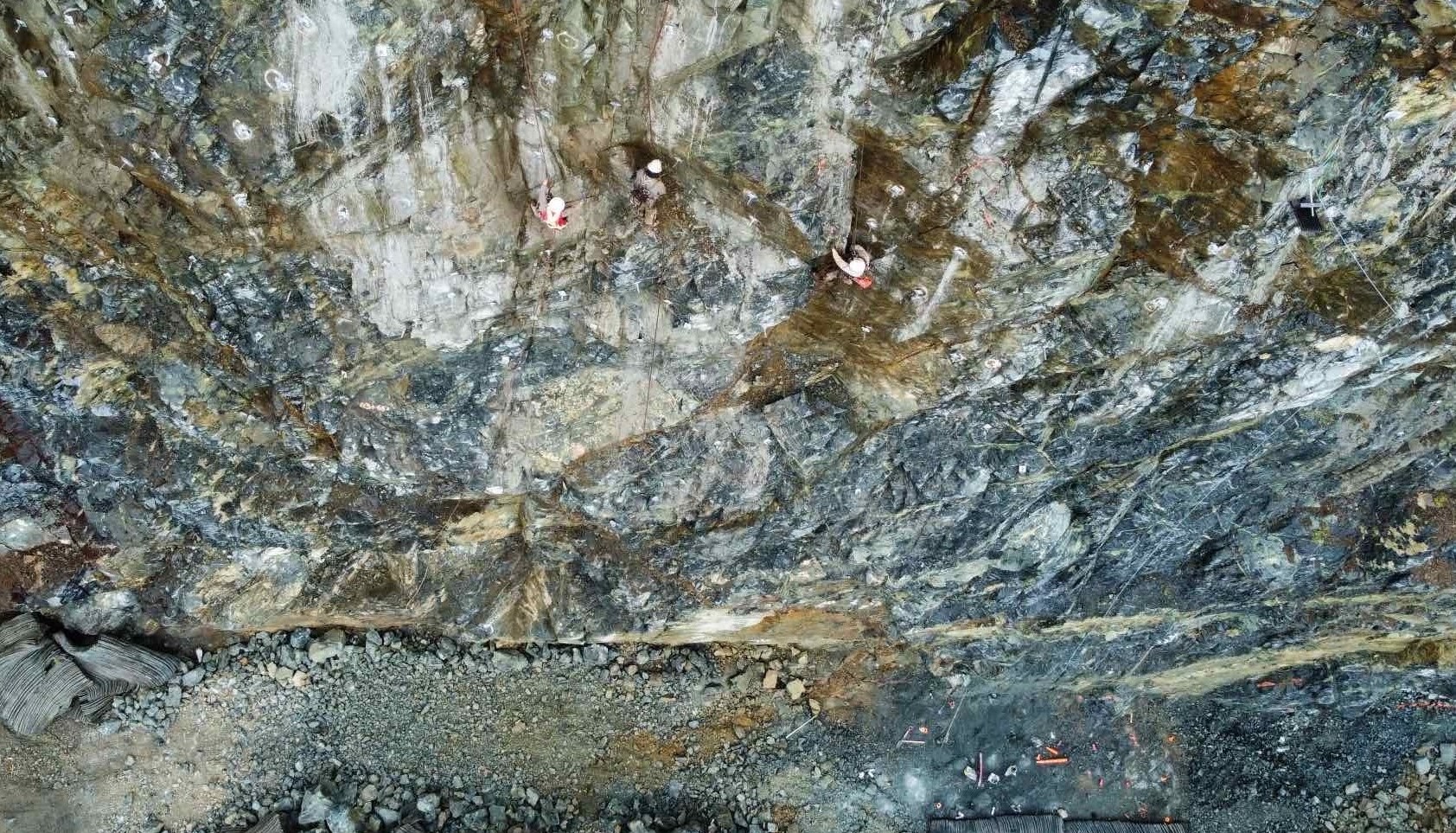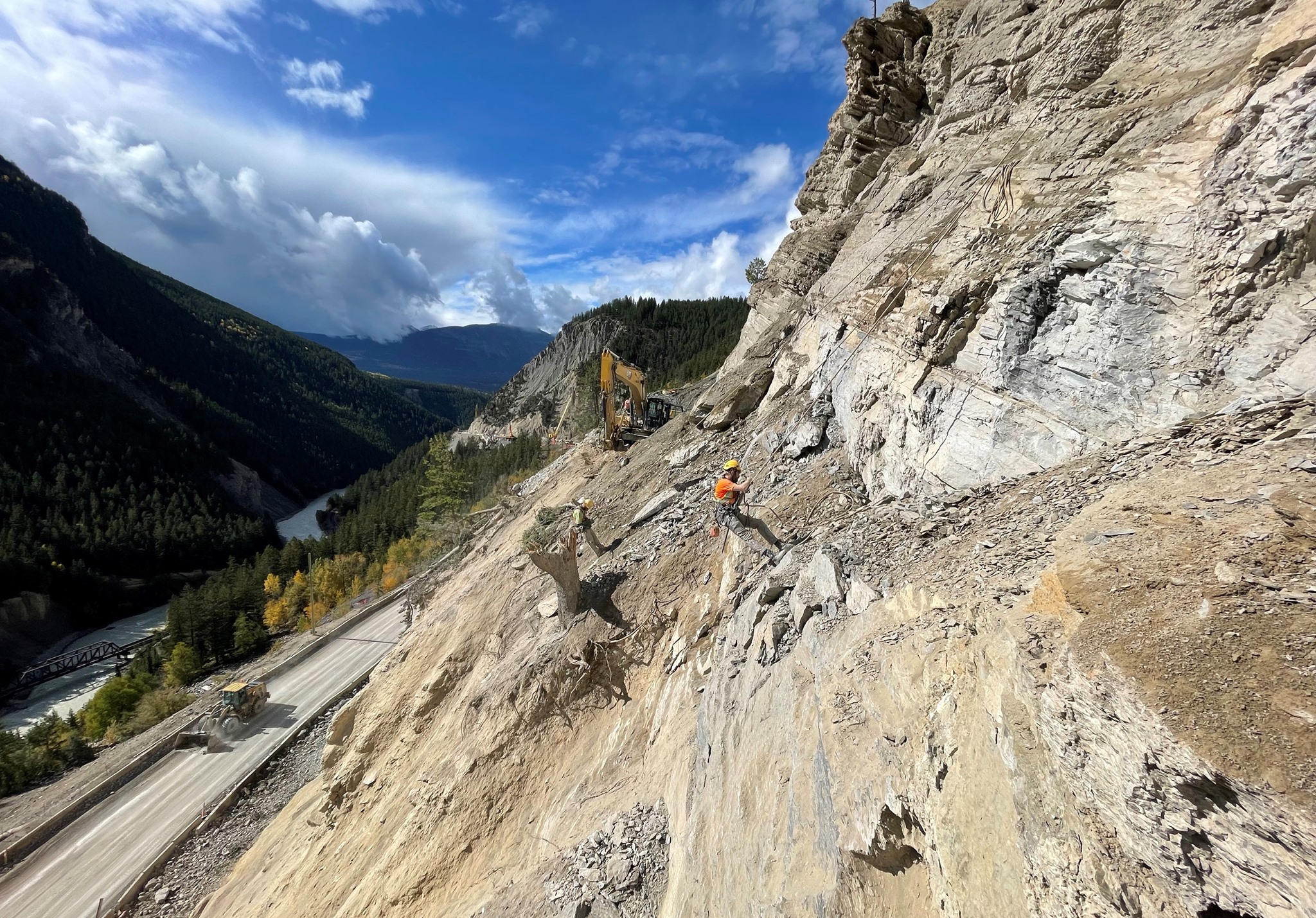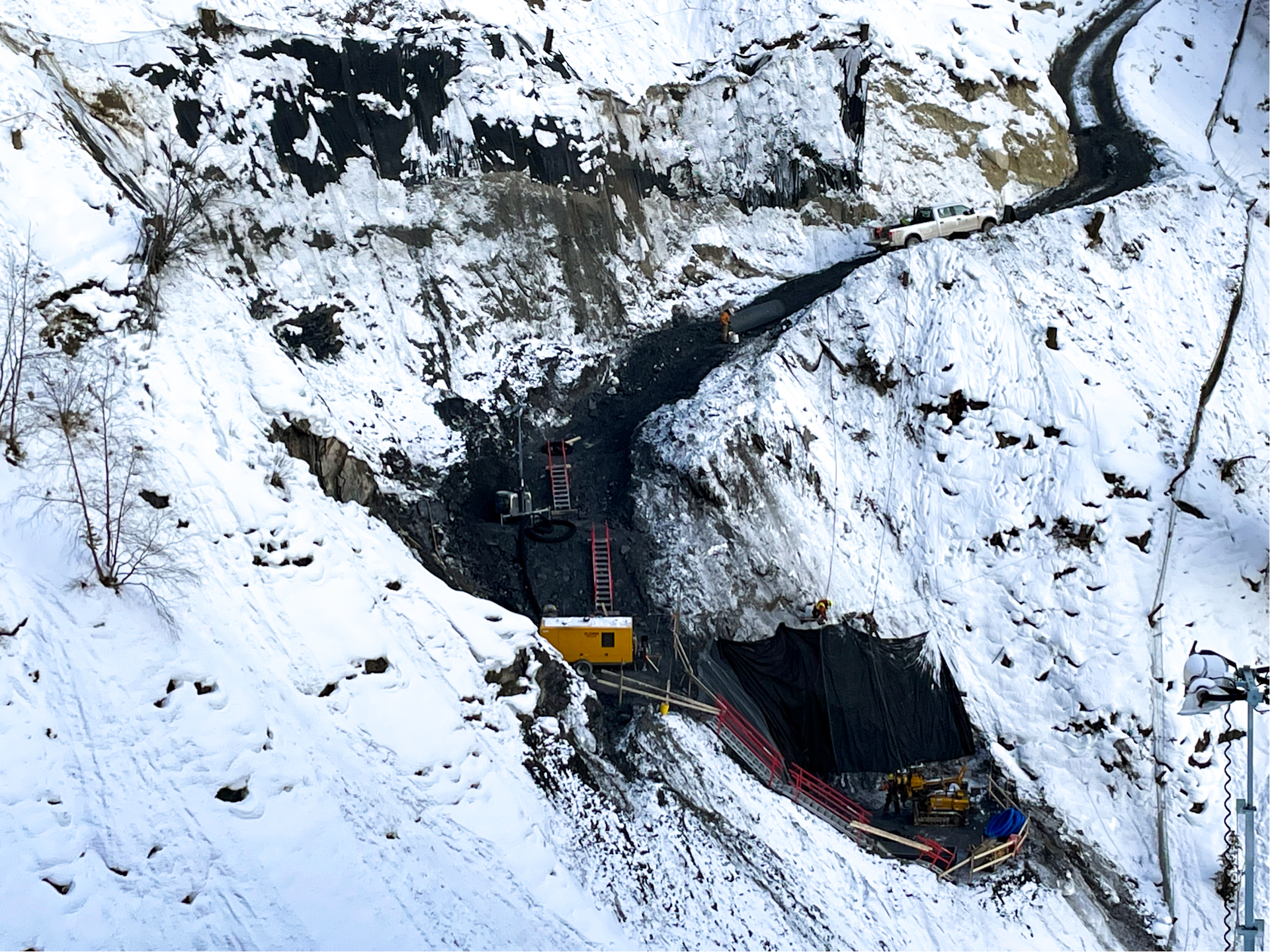
You might have seen scalers in photos – high, high up on slopes or mountain sides – suspended by ropes as they work from top to bottom to remove loose rock.
Scalers work above roadways to help keep motorists safe from falling rock or encountering a surprise boulder (or three). Their work as rock removal specialists enables workers and equipment to safely perform construction below. They also clean off any residual material left on a slope after blasting. Scalers are the first on the ground (slope), and often the last at the end of a construction project.
What it Takes to Be a Scaler
This work takes athleticism and skill to effectively dislodge unstable rock and to stay safe while attached to a system of ropes and harnesses. For an example, check out this breathtaking video!
It requires extreme caution and attention to detail. As a scaler works down the slope, they can be exposed to loose materials falling from above. A loose rock that’s unintentionally left in place (missed) can tumble down if brushed by the scaler’s ropes – possibly hitting the scaler or even severing their rope.
Rocks falling down a slope are unpredictable and erratic, which is why the road is usually closed to traffic, where this work is happening. As well, any nearby structures may need to be protected from the impact of rockfall during scaling.

Scaling is done typically for one of three reasons – slope maintenance to reduce rockfall hazards, as part of construction for a highway improvement project, or in response to a slide and or rockfall that has happened.
The Ministry of Transportation and Infrastructure has more than 22,000 rock slopes along BC’s numbered highways and many more on the non-numbered routes as well. High hazard slopes are assessed by geotechnical engineers to help prioritize slope stabilization work.
How Rock Removal is Done
Before the scaling begins, a geotechnical engineer will assess the site and identify areas of the slope for stabilization measures like overhangs that may require trimming and areas that require scaling.
If the area to be scaled is covered in vegetation, scalers may first need to remove trees and shrubs to get to the rock of concern. Once the rock is exposed, they wedge a pry bar into fissures on the slope to check for loose rock and remove it. On larger rocks, they may place rubber air bags between rock joints and inflate the bags with compressed air to dislodge the unstable rocks. Tools used for this work may also include jacks and hydraulic splitters. The work may need to be supplemented by controlled blasting especially when trimming of a larger area of rock or outcrop is required.
As part of their role in slope stabilization, scalers may apply shotcrete (sprayed concrete), install slope mesh to contain and direct rockfall, or “pin” rock walls with rock anchors.

With scaling involving such intense physical labour done by hand, you might wonder why it isn’t performed using more machinery and less person power. While excavators may sometimes be put to work on lower slopes, the facts are that much scaling work requires a human touch, understanding and judgement. (Never mind that machinery isn’t always able to reach the heights that many scalers go to). Care must be taken not to over excavate or undermine sections of the slope. Too much excavation could weaken the slope and result in more rock coming down over time.
Paradoxically, the physically demanding and rugged work of scaling, to keep highways safe, takes a fine touch.
For more blogs and photos of slope stabilization, and a video showing scalers at work, see:
What Happens After a Rock Hits a BC Highway
Trim Blasting at Hwy 99 S2S (photo)
Rock Scaling on Sherman Pass (Washington State video)
seems like a natural fit for an experienced ironworker put me in coach ! eagle bay bc
Hi Clint – thanks for your message. We encourage you to reach out to a local company to apply.
What company is doing the scaling? Looking for where I can apply
Hi there Sky Lock,
We encourage you to connect directly with our staff in your nearest area office to get more info on which company is providing these services in your area. https://www2.gov.bc.ca/gov/content/transportation/transportation-reports-and-reference/regional-district-contacts
BAT Construction in Kamloops….